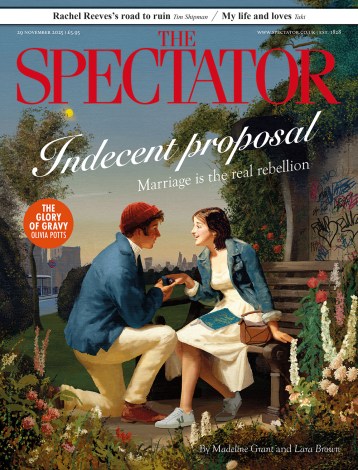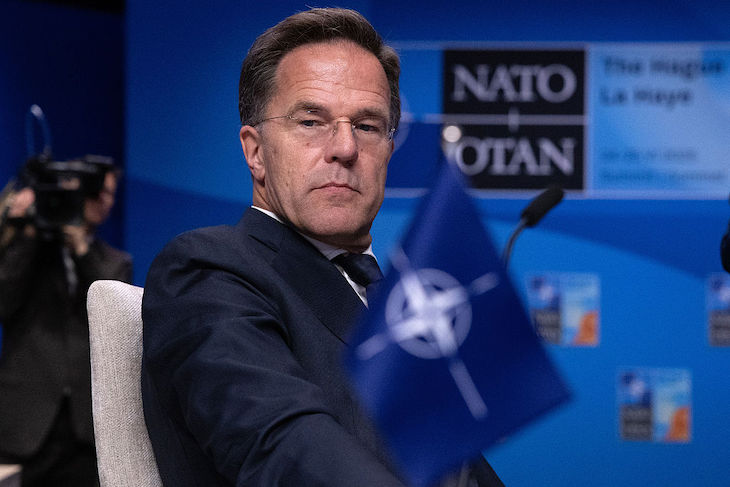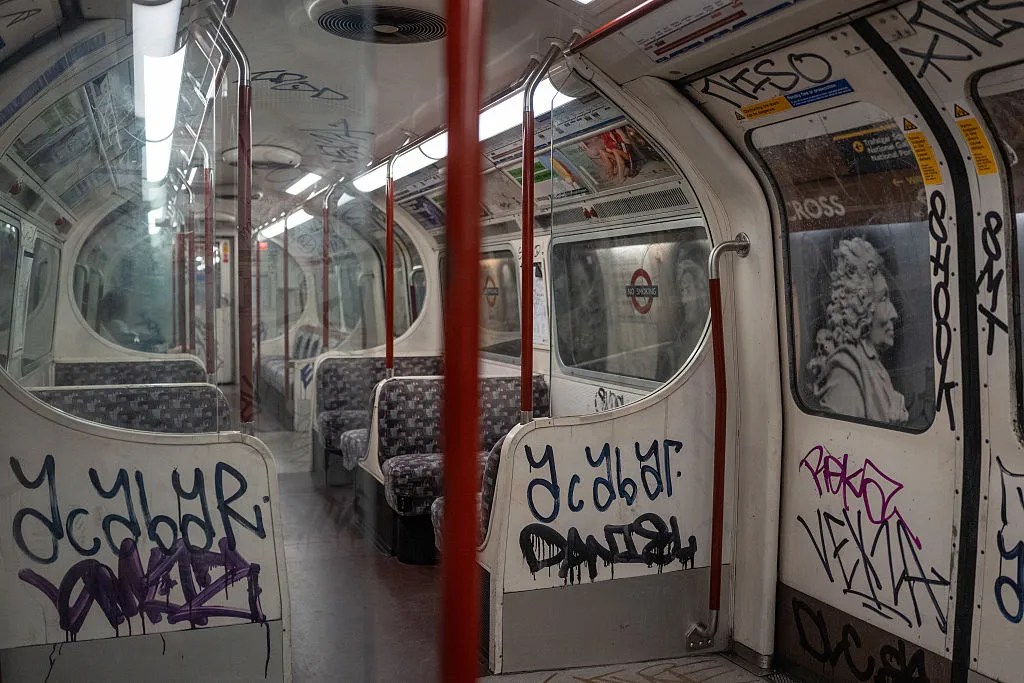Something is afoot in Nato’s airspace – but the alliance’s complacent response to the various incursions is rather troubling. In recent weeks, suspicious drones have intruded into the jurisdictions of Belgium, Germany, Denmark and Norway; identifiable Russian drones were tracked over Romania and shot down over Poland. Three Russian Mikoyan MiG-31 fighters violated Estonia’s airspace and loitered for 12 minutes before retreating when Italian F-35 aircraft were scrambled to intercept them.
Putin is testing the alliance, pushing it little by little, upping the ante by increments to see what response he finds
You might think that these various incidents would shake Nato’s secretary general, Mark Rutte, out of his usual phlegmatic self. But you’d be mistaken.
‘We are 25 times bigger than Russia,’ said Rutte at the meeting of Nato Ministers of Defence in Brussels yesterday. ‘We know that their fighter jet pilots are famously not successful in steering these fighter jets…we are not going to take down an airplane in Nato airspace if it does not pose a threat. But if it poses a threat, I can assure you that our military people have all the authorities they need to make sure that that plane immediately does not pose a threat anymore.’
Rutte, nicknamed ‘Teflon Mark’ during his 14 years as prime minister of the Netherlands, is not only imperturbable but soothingly calm. But Russia’s threat to Europe is not issue on which it is wise to be relaxed. While some will applaud Rutte’s reassuring words, they strike me as evidence of staggering complacency. The secretary general is essentially saying that Nato’s economic power and population size means that the alliance’s current stance against Russian provocation is broadly satisfactory; Russia knows Nato’s strength, and that strength will deter Vladimir Putin from full-scale confrontation. Really?
Russia’s recent activity in Nato airspace is not accidental, nor is it calculated simply to annoy or harass. Putin is testing the alliance, pushing it little by little, upping the ante by increments to see what response he finds. When Russian drones crossed into Polish airspace, and Russian aircraft flew over Estonia, both countries requested meetings with their fellow member states under Article 4 of the North Atlantic Treaty; this provides for allies to ‘consult together whenever, in the opinion of any of them, the territorial integrity, political independence or security of any of the Parties is threatened’.
Russia’s president Putin will have watched these consultations extremely carefully. He has introduced a new element into the strategic situation, using aircraft and drones to violate Nato airspace. But yesterday, Rutte showed that the alliance’s reaction was, well, nothing.
It’s true that Nato hasn’t just sat on its hands. After the consultation requested by Poland in September, Nato established Eastern Sentry, increasing its capacity in the air, at sea and on land to counter Russian aggression. But this has been little more than coordinating under Nato’s umbrella what was already being done by individual member states. So far it amounts to 13 fighter aircraft, from Denmark, France, Germany, Italy and the United Kingdom, the Royal Danish Navy air defence frigate HDMS Niels Juel and a SAMP/T Aster 30 anti-missile system supplied by the Italian Air Force. This is speaking softly, not carrying a big stick.
Rutte’s insistence that Russian aircraft or drones will not be shot down if they do not ‘pose a threat’ raises the question of how that is to be determined, and at what point Nato can establish their intentions. The MiG-31s which flew into Estonian airspace are equipped to launch the Kh-47M2 Kinzhal ballistic missile, a weapon with a range of 300 miles and capable of carrying conventional or nuclear warheads. Would Nato deem an aircraft like that to ‘pose a threat’ at the point it launched its missile? That might be rather too late.
Putin is not simply testing Nato’s physical air defences in terms of radar, interceptors and anti-aircraft capability. He is probing the alliance’s resolve, its morale, its willingness, when necessary, to use the enormous strength of which Rutte made such play. Nato’s defence ministers may think they are acting judiciously and in a way calculated not to escalate tensions unnecessarily, but is that how it looks from the Kremlin?
Putin did not begin the conflict in Ukraine with a full-scale invasion. In 2014, Russian forces occupied and annexed Crimea then supported paramilitary groups in the Donbas until, by 2018, it was under Russian occupation. There was a persistent campaign of cyberwarfare against Ukraine, and a series of small-scale naval incidents and confrontations in the Black Sea.
It was only in February 2022 that Putin launched a conventional military invasion of Ukraine. He was emboldened to do so because there had been virtually no resistance or pushback from the West. He probed further and further until it became a war that has cost hundreds of thousands of lives.
Nato failed to deter Russia in the past. Do we really imagine that Vladimir Putin, watching Mark Rutte’s calm, smiling performance on Wednesday, has been deterred for even a moment this time? Or is he considering what his next step should be in testing the West? Realistically, it is not the former.








Comments